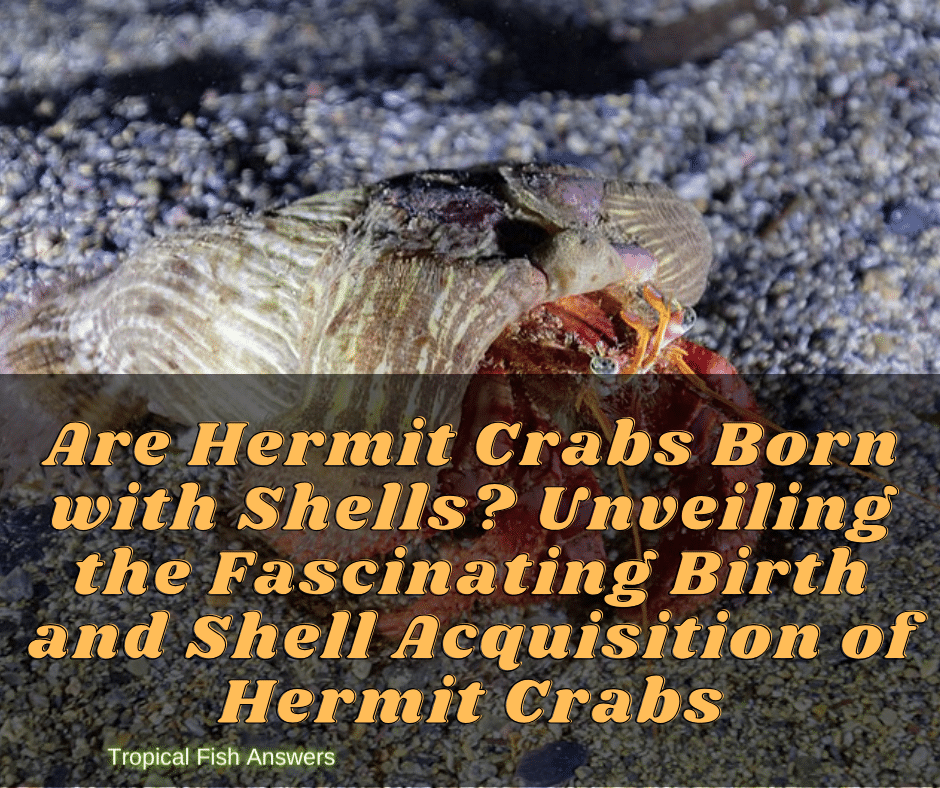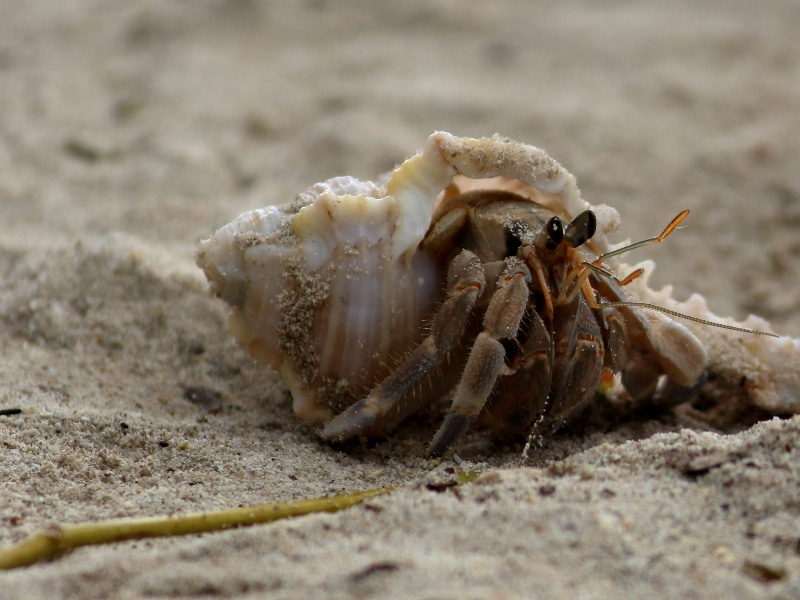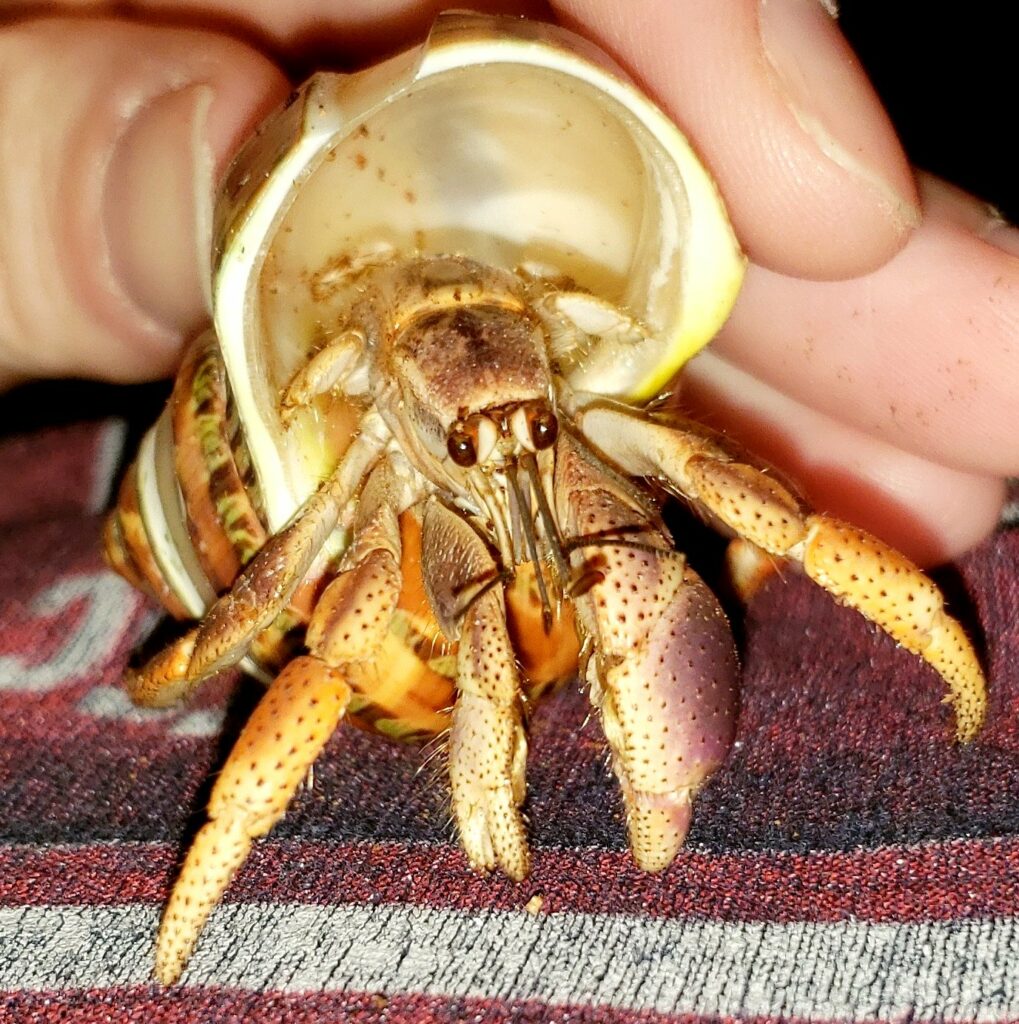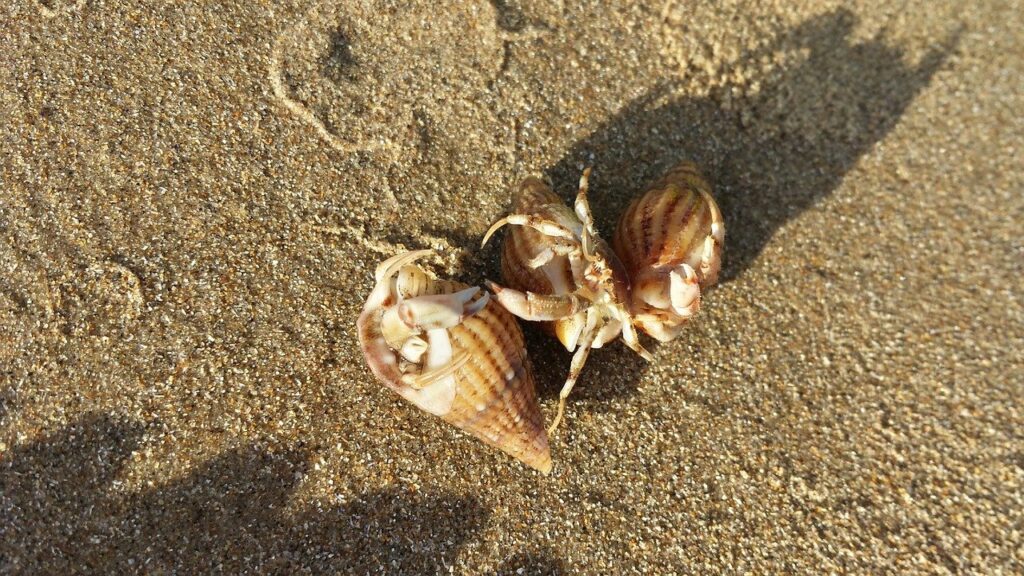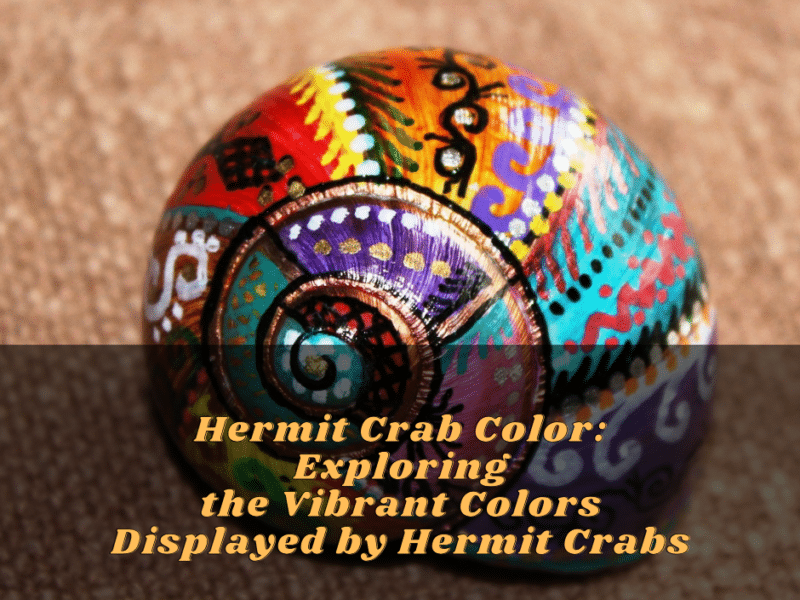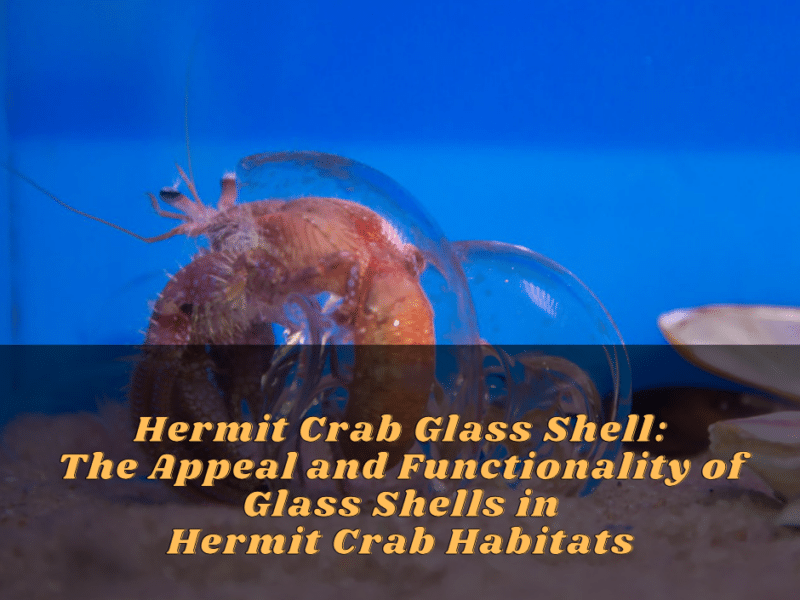Introduction
Hermit crabs have long fascinated both scientists and nature enthusiasts with their unique behavior and adaptation mechanisms. One of the most intriguing aspects of their life cycle is the way they acquire and use shells. Are hermit crabs born with shells, or do they acquire them later in life? In this article, we will delve into the fascinating birth and shell acquisition of hermit crabs, shedding light on their remarkable reproductive strategies and the intricate relationship between these crustaceans and their protective homes.
Understanding The Life Cycle Of Hermit Crabs
To fully comprehend the process of shell acquisition in hermit crabs, it is crucial to first understand their life cycle. Hermit crabs undergo a series of molts throughout their lives, growing incrementally by shedding their exoskeletons. As they grow, they need larger and more spacious shells to protect their soft bodies.
The Intrigue Surrounding Hermit Crab Reproduction And Shell Acquisition
Contrary to popular belief, hermit crabs are not born with shells. The journey of shell acquisition begins with their larval stage, during which hermit crabs hatch from their eggs as lightly colored and translucent larvae. At this point, they are extremely vulnerable and lack any protective covering.
These tiny larvae spend the initial period of their lives drifting in the water, at the mercy of ocean currents. During this phase, they actively search for suitable shells to call home. The search for a shell is not random; hermit crabs have specific preferences and requirements. They seek out shells that fit their size at the time, as well as shells with suitable weight and shape.
Once a hermit crab finds a suitable shell, it undergoes a process called “settling.” It carefully inspects the shell to ensure it meets its needs and then transitions inside, attaching itself to the shell with specialized appendages called “hooks.” The hook-like structures secure the hermit crab to the shell, providing stability and protection.
However, shell acquisition does not end with settling into a new shell. As hermit crabs continue to grow, they will eventually outgrow their current shell. At this point, they must leave their old shell behind and seek out a larger one. The process of finding and transitioning into a new shell is known as “changing shells” or “shell swapping.”
During the shell-swapping process, hermit crabs face a period of vulnerability, as they are temporarily without the protection of a shell. They must quickly locate a new shell that meets their growing needs and successfully transition into it. This vulnerability makes them susceptible to predators and environmental hazards, emphasizing the critical role shells play in their survival.
In summary, hermit crabs are not born with shells. Instead, they embark on a remarkable journey of finding, settling into, and eventually changing shells throughout their lives. The acquisition of suitable shells is both a necessity for their growth and a means of protection. Understanding this intricate relationship sheds light on the unique and fascinating life cycle of these intriguing crustaceans.
References:
- https://www.thesprucepets.com/hermit-crab-shells-1238627
- https://www.nationalgeographic.com/news/2016/01/160121-animals-hermit-crabs-oceans-reefs-science/
- https://ocean.si.edu/ocean-life/invertebrates/hidden-life-hermit-crabs
Birth Of Hermit Crabs
The Complex And Harrowing Birth Process Of Hermit Crabs
The birth of hermit crabs is a complex and fascinating process that begins with the hatching of their eggs. Unlike many other crustaceans, hermit crabs do not give birth to live young. Instead, they lay eggs that hatch into larvae. These larvae are extremely vulnerable and lack protective shells, as they have not yet started the process of shell acquisition.
After the eggs are laid, they are typically carried by the female hermit crab attached to her abdomen until they are ready to hatch. The hatching process occurs in the water, where the larvae are released. These tiny, translucent babies begin their journey in search of suitable shells that will become their homes.
Migration To The Sea For Growth And Development
Once the hermit crab larvae hatch, they enter a phase known as the zoea stage. At this stage, they are carried by ocean currents and spend their days drifting in the open water. During this period, they actively search for suitable shells to serve as their protective homes.
The search for a shell is not random. Hermit crabs have specific preferences and requirements when it comes to shell selection. They seek out shells that are the right size for their current stage of development, as well as shells with suitable weight and shape. This careful selection is crucial for their survival and ability to grow properly.
After finding a suitable shell, the hermit crab larvae undergo a process known as settling. They carefully inspect the shell to ensure it meets their needs, and then they transition inside the shell. To secure themselves to the shell, they use specialized appendages called “hooks.” These hooks provide stability and protection, allowing the hermit crab larvae to make the shell their new home.
Once settled in a shell, the hermit crab larvae continue to grow and develop. As they outgrow their current shells, they will eventually need to find larger ones. This process of finding and transitioning into a new shell is known as “shell swapping” or “changing shells.”
During the shell-swapping process, hermit crabs face a period of vulnerability. They temporarily leave the protection of their current shell and must quickly find a new shell that meets their growing needs. This vulnerability makes them susceptible to predators and environmental hazards, highlighting the importance of shells in their survival.
In summary, hermit crabs are not born with shells. Instead, they hatch from eggs as tiny, translucent larvae and embark on a remarkable journey of finding and settling into suitable shells. Shell acquisition is a critical part of their growth and development, providing them with protection and enabling them to thrive in their aquatic environments. Understanding the birth and shell acquisition process of hermit crabs sheds light on the unique and fascinating life cycle of these intriguing crustaceans.
Shell Acquisition
The Crucial Importance Of Shells For Hermit Crab Survival
When it comes to hermit crabs, shells are not just a means of protection; they are essential for their survival and growth. Unlike other crustaceans, hermit crabs do not have a hard exoskeleton to shield them from predators or harsh environmental conditions. Instead, they rely on finding and acquiring suitable shells to serve as their homes.
The shells provide a safe haven for hermit crabs, shielding them from predators and offering protection against the elements. Without a shell, hermit crabs are incredibly vulnerable. They have soft and unprotected bodies that are easily injured or preyed upon. As they grow, the need for a larger shell becomes imperative, as their bodies cannot expand to accommodate their increasing size.
Hermit crabs go through a remarkable process known as “shell swapping” or “changing shells” as they outgrow their current shells. During this period, they temporarily leave the protection of their old shell and quickly search for a new one that meets their growing needs. This process is crucial, and timing is of the essence, as hermit crabs are vulnerable to predators and environmental hazards during this transitional phase.
Challenges Faced In Finding Suitable Shells
Finding suitable shells is not an easy task for hermit crabs. They have specific preferences and requirements when it comes to shell selection. They seek out shells that are the right size for their current stage of development, ensuring a comfortable fit. Additionally, they look for shells with suitable weight and shape, which are crucial for their mobility and protection.
The search for a suitable shell is not random. Hermit crabs have the ability to detect and recognize shells that meet their criteria. They have a keen sense of smell and can sense the presence of chemicals released by other hermit crabs that indicate the suitability of a shell. This sensory ability allows them to locate potential homes and assess their suitability.
However, suitable shells can be scarce and in high demand. Hermit crabs often compete with one another for access to the best shells, leading to intense shell fights. These fights involve hermit crabs trying to force their way into occupied shells or attempting to pry a desirable shell away from another crab. The winner claims the better shell, while the loser is left vulnerable and exposed.
Another challenge hermit crabs face in shell acquisition is the availability of suitable shells in their environment. As human activity and pollution continue to deplete shell resources, hermit crabs are facing a scarcity of options. This scarcity forces them to be resourceful and adapt to using alternative materials such as bottle caps, pieces of plastic, or even discarded human-made objects as makeshift shells. While these alternatives may provide temporary protection, they are not ideal for the hermit crabs’ long-term survival and growth.
In conclusion, shells play a crucial role in the survival and growth of hermit crabs. These fascinating creatures rely on shells to protect themselves from predators, provide shelter from harsh environmental conditions, and allow for their bodies to grow. The search for suitable shells presents its own challenges, from competition among hermit crabs to the scarcity of suitable shells in their environment. Understanding the importance of shells and the challenges faced in acquiring them sheds light on the remarkable survival strategies of these intriguing crustaceans.
Threats To Shell Availability
The Impact Of Over-development And Commercial Seashelling
The availability of suitable shells for hermit crabs has been significantly impacted by the activities of humans, particularly in coastal areas. Over-development and commercial seashelling have had a detrimental effect on shell populations, making it harder for hermit crabs to find suitable homes.
As coastal areas become more developed for tourism and urbanization, natural habitats that provide shells for hermit crabs are destroyed or significantly altered. Construction activities such as dredging, land reclamation, and beachfront development disturb the natural balance and availability of shells. This disruption in the coastal ecosystem directly affects the abundance and variety of shells that hermit crabs rely on.
Commercial seashelling further exacerbates the problem. In some tourist destinations, the sale of seashells for decorative purposes has become a lucrative business. Collectors and vendors gather large quantities of shells from the shoreline, depleting local shell resources. This practice not only reduces the number of shells available to hermit crabs but also disrupts the natural process of shell recycling, as shells that would normally wash ashore and become available for hermit crabs are taken out of the ecosystem.
Contributing Factors In The Shortage Of Shells For Hermit Crabs
Apart from human activities, several other factors contribute to the shortage of shells for hermit crabs:
- Predator-prey dynamics: Some predators, such as octopuses and larger crustaceans, target hermit crabs specifically for their shells. These predators break open the shells to access the juicy hermit crab inside, leaving empty shells that cannot be reused by other hermit crabs.
- Environmental changes: Climate change and ocean acidification can negatively impact shell-producing organisms, such as mollusks and gastropods. As their populations decline, so does the availability of shells for hermit crabs.
- Competition among hermit crabs: As hermit crabs grow, they need larger shells to accommodate their increasing size. This creates intense competition among hermit crabs for the limited supply of suitable shells. Smaller or weaker hermit crabs often end up with less desirable shells or no shell at all, making them vulnerable to predation and environmental stress.
- Shell quality: Not all shells are suitable for hermit crabs. They require shells that are the right size, weight, and shape to ensure a comfortable fit and optimal protection. Shells that are damaged, weak, or unsuitable in any way are rejected by hermit crabs, further reducing the available options.
Given these challenges, hermit crabs have had to adapt and find alternative solutions to the shortage of suitable shells. Some hermit crab populations have been observed using discarded human-made objects, such as bottle caps and pieces of plastic, as makeshift shells. While these alternatives might provide temporary protection, they are not ideal for the hermit crabs’ long-term survival and growth.
In conclusion, the availability of suitable shells for hermit crabs has been significantly impacted by human activities such as over-development and commercial seashelling. These activities disrupt the natural balance and availability of shells, making it harder for hermit crabs to find suitable homes. Additionally, factors such as predator-prey dynamics, environmental changes, competition among hermit crabs, and shell quality contribute to the shortage of shells for hermit crabs. Understanding these threats and challenges sheds light on the importance of preserving coastal ecosystems and raising awareness about the impact of human activities on shell availability for these fascinating crustaceans.
Conclusion
In conclusion, branding plays a crucial role in differentiating your business from competitors and making it more recognizable to customers. By showcasing your unique values, story, and brand promise, you can stand out in a crowded market and create a point of difference that sets you apart from the competition. Building a strong online presence, delivering exceptional customer experiences, and developing a clear brand strategy are key elements in successfully utilizing branding for your business.
Several best examples like Apple, Nike, and Coca-Cola demonstrate the power of consistent branding in creating a strong emotional connection with customers. By understanding the importance of branding and implementing effective strategies, you can establish a strong and reliable brand identity that resonates with your target audience.
Are Hermit Crabs Born With Shells: Unveiling The Fascinating Birth And Shell Acquisition Of Hermit Crabs
Appreciating The Remarkable Journey Of Hermit Crabs
The birth and shell acquisition process of hermit crabs is a remarkable journey that highlights the adaptive nature of these fascinating crustaceans. Contrary to popular belief, hermit crabs are not born with shells. Instead, they begin their lives as tiny larvae floating in the ocean. During this stage, the larvae go through several molts, shedding their exoskeletons as they grow. Eventually, they develop into juvenile hermit crabs and begin their search for a suitable shell to call home.
Hermit crabs have a unique approach to finding shells. Rather than growing their own protective covering, they rely on discarded shells from other sea creatures. When a hermit crab outgrows its current shell, it must seek out a new one that provides a better fit. This process is not as simple as finding any shell available – hermit crabs have specific requirements for shell size, weight, and shape to ensure a comfortable and secure fit.
Hermit crabs are highly selective in their choice of shells and engage in a competitive search for the best available options. The availability of suitable shells is often limited, leading to intense competition among hermit crabs. Smaller or weaker individuals may have to settle for less desirable shells or even go without shells altogether, leaving them vulnerable to predation and environmental stress.
Frequently Asked Questions About Hermit Crab Birth And Shell Acquisition
Q: Are hermit crabs born with shells?
A: No, hermit crabs are not born with shells. They begin their lives as larvae and acquire shells as they grow.
Q: How do hermit crabs acquire shells?
A: Hermit crabs acquire shells by searching for discarded shells from other sea creatures. They seek out shells that provide a comfortable fit and meet specific size, weight, and shape requirements.
Q: Why do hermit crabs need shells?A: Hermit crabs need shells for protection and to provide a secure and comfortable home. The shell acts as a mobile shelter that they carry on their backs.
Q: What happens when a hermit crab outgrows its shell?A: When a hermit crab outgrows its shell, it must find a larger one that provides a better fit. This process involves searching for available shells and engaging in competitive interactions with other hermit crabs.
Q: What challenges do hermit crabs face in finding suitable shells?A: Hermit crabs face challenges in finding suitable shells due to limited availability, competition from other hermit crabs, and specific requirements for shell size, weight, and shape.
Q: Can hermit crabs use artificial shells?A: While hermit crabs can sometimes use artificial objects, such as bottle caps or pieces of plastic, as temporary shells, these alternatives are not ideal for their long-term survival and growth. Natural shells are preferred.
In conclusion, hermit crabs are not born with shells but acquire them as they grow. They go through a remarkable journey from larval stage to juvenile hermit crabs, during which they search for suitable shells to call home. The process of shell acquisition involves intense competition, and hermit crabs have specific requirements for shell size, weight, and shape. While they can sometimes make use of artificial shells, natural shells are preferred for their long-term survival. Understanding the fascinating birth and shell acquisition process of hermit crabs sheds light on the unique challenges they face and the importance of preserving their natural habitats.
Are Hermit Crabs Born with Shells: Unveiling the Fascinating Birth and Shell Acquisition of Hermit Crabs
- Q: Do hermit crabs come into this world with shells?
A: No, hermit crabs are not born with shells. They go through a fascinating journey in their early stages of life. - Q: What are the different stages of a hermit crab’s life?
A: Hermit crabs have three basic stages: Zoea, where they go through multiple phases, Megalopa, the stage where it is recommended to buy shells as they start resembling baby hermit crabs, and the final stage as hermit crabs, where they come ashore and molt for the first time, transforming into the miniature version of adult hermit crabs. - Q: How long do hermit crabs live?
A: Hermit crabs have been known to have a lifespan of up to twenty-five to thirty years when kept in captivity. - Q: Do hermit crabs need to drink saltwater?
A: No, hermit crabs do not drink saltwater. They rely on rainwater for drinking and require it for their survival. - Q: When do hermit crabs start showing interest in shells?
A: Based on experiences, hermit crabs usually start showing interest in shells after approximately 25-30 days, except for C. variabilis species. - Q: How do hermit crabs reproduce?
A: Female hermit crabs carry several hundred eggs inside their shells until they mature. The eggs are attached to her abdomen and appendages. When ready, the female hermit crab goes to the ocean and releases the eggs by scraping her appendages. The eggs appear as light brown round circles in a bunch, resembling grapes.
Please note: Raising hermit crabs in captivity can be challenging but rewarding.
